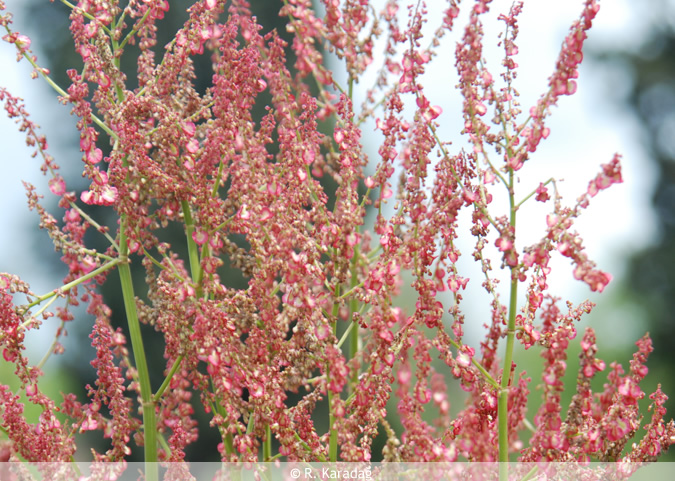Species of Rumex sp are common to wide areas of Europe, the Mediterranean countries, and farther east to the Himalayas . In Turkey alone, 25 species have been identified and named, some of which crossbreed. Rumex (sorrel) belongs to the Polygonaceae family, the knotweeds. The annual perennial plants are characterized by pulpy, undivided leaves, by many small flowers that cluster in spikes, and by small triangular or lensshaped brown seeds. Many have thicker taproots that are an intensive yellow from the dyestuff emodin. The roots provide the yellow dyestuff. On an alum mordant, it produces a not very strong but pleasing yellow, which turns to brown, however, soon after exposure to light.Historical Data
Dye analyses of Turkish rugs and flatweaves from the 19th century show that Rumex sp roots were often used together with Rumex olympicus and indigosulfonic acid to dye green. Personal experiments showed that such a green can be very quickly produced: the yarn is heated in a dye bath of Rumex sp. roots, indigosulfonic acid, and alum, and within only half an hour the green appears. When the blue from the water-soluble indigosulfonic acid later washes out, the yellow from Rumex is left, which turns brown, and then is often taken for camel's hair. Rumex species, e.g., Rumex nepalensis, and related species from the Rheum genus, are used in Nepal and Tibet as a yellow dye plant.About 1980, the use of Rumex leaves as a mordant for madder dyeing was still known in a few villages in Western Anatolia . Probably the oxalic acid and calcium salts in the leaves act as a mordant. Madder dyes with this organic mordant are brown-red. Dye analyses show that the same madder dyestuffs are present as with an alum mordant.

